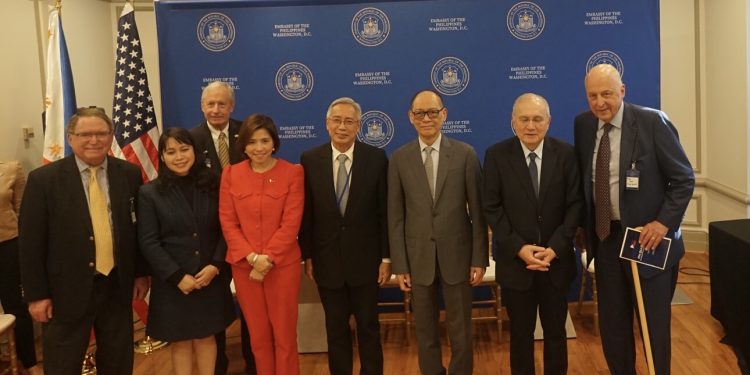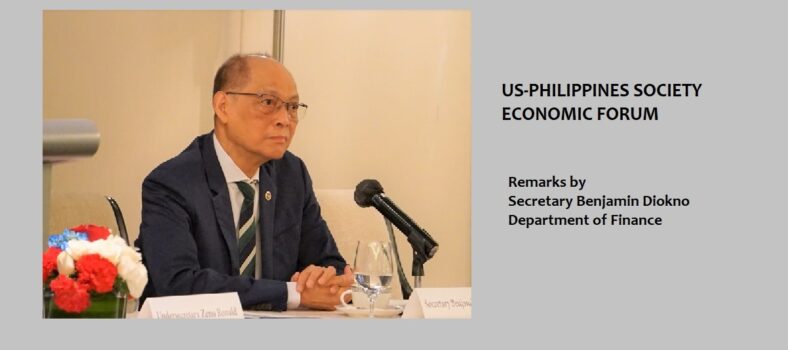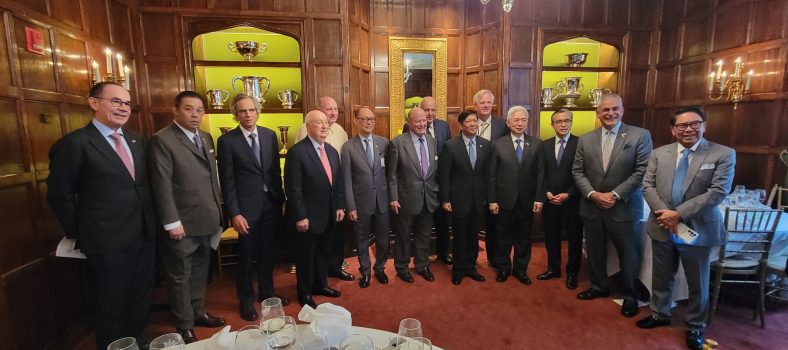Philippine Economic Outlook and Investment Opportunities

The US-Philippines Society participated in an 14 October 2022 forum jointly organized by the Bangko Sentral ng Pilipinas’ Investor Relations Group in cooperation with the Philippine Embassy in Washington D.C. and the Philippine Trade and Investment Center on the sidelines of the International Monetary Fund and World Bank Annual Meetings in Washington, D.C. Key Philippine Cabinet members of the Economic Team engaged in follow-up discussions with U.S. investors and representatives of international finance institutions. Despite headwinds and geopolitical risks, the team presented an optimistic view for the Philippine economy that rebounded and accelerated in early 2022 spurred by domestic consumption and private investments.
Citing the 2022 first half average growth of a robust 7.8 percent that is among the highest in the region, Finance Secretary Diokno anticipates the Philippines to meet its target of between 6.5 per cent to 7.5 percent growth for the full year. Foreign direct investments are on track to reach FDI targets for 2022. Digitization has greatly improved tax collection efficiency resulting in 4.46 percent increase exceeding pre-pandemic level.
Bangko Sentral Governor Felipe Medalla assured the audience that while inflation remains high, the supply shocks are temporary. Forecasts show prices should stabilize by second half of 2023 and normalize in 2024. The Bangko Sentral monitors policy adjustments by the U.S. Fed and employs from its toolkit a range of measures to defend the peso as the U.S Federal Bank continues to increase interest rates. Among these are adjustment of interest rates, selling peso reserves and support of non-government measures. The banking system remains resilient and on solid footing even during the pandemic. Push for digitization of processes will bring about substantive benefits to the economy.
Budget Secretary Pangandaman presented the 2023 budget amounting to $92 billion an increase of 4.9 per cent and account for 22.2 per cent of GDP. Addressing the challenges to the 8-point socio-economic agenda of the Marcos administration, the House-approved budget allocates major funding in agriculture (USD 3.12 B), infrastructure development (USD 20.86 B), education sector (USD 14.47 B), health sector (USD 5.075 B), social safety net (USD 8.69 B) and also ICT and digitalization (USD 218.77 M)
The 8-Point Socioeconomic Agenda serves as the strategic framework of the PDP 2023-2028, the country’s medium-term development blueprint. NEDA Assistant Secretary Daway-Lucanes laid out a path for economic transformation that involves participation from private sector and social institutions. This multi-level transformation includes creating quality and green jobs, mitigating the effects of the pandemic, ensuring sound macroeconomic fundamentals and good governance, upholding public order and safety, peace and security.
Co-Chair Amb John Negroponte raised the pressing issue concerning shortage of medical personnel in the U.S. as an opportunity for U.S. and Philippines two-way exchange. In his closing remarks, Executive Director Hank Hendrickson reflected on the Filipino American History month-long celebration and many concrete steps taken to recognize Filipino Americans including Fireman 2nd Class Telesforo Trinidad, present-day educators and medical professionals and PH Embassy’s Chef Wing who won First Place People’s Choice in the annual Washington culinary competition.
RESOURCES
Bangko Sentral ng Pilipinas – Safeguarding Price Stability Amid Challenging Times
National Economic and Development Authority – Philippine Economic Agenda_An Overview
Department of Finance – Keynote on the Philippine Economic Outlook
Department of Budget and Management – Presentation on Expenditure Performance and Program


